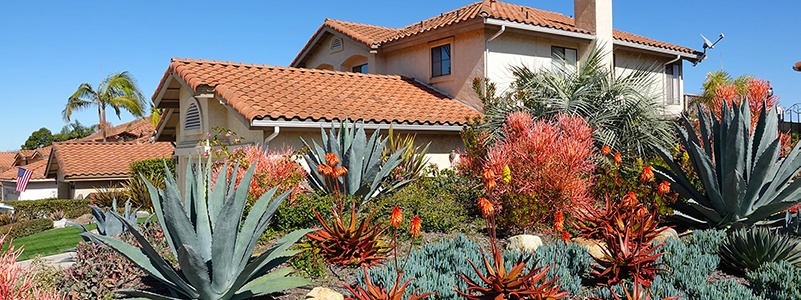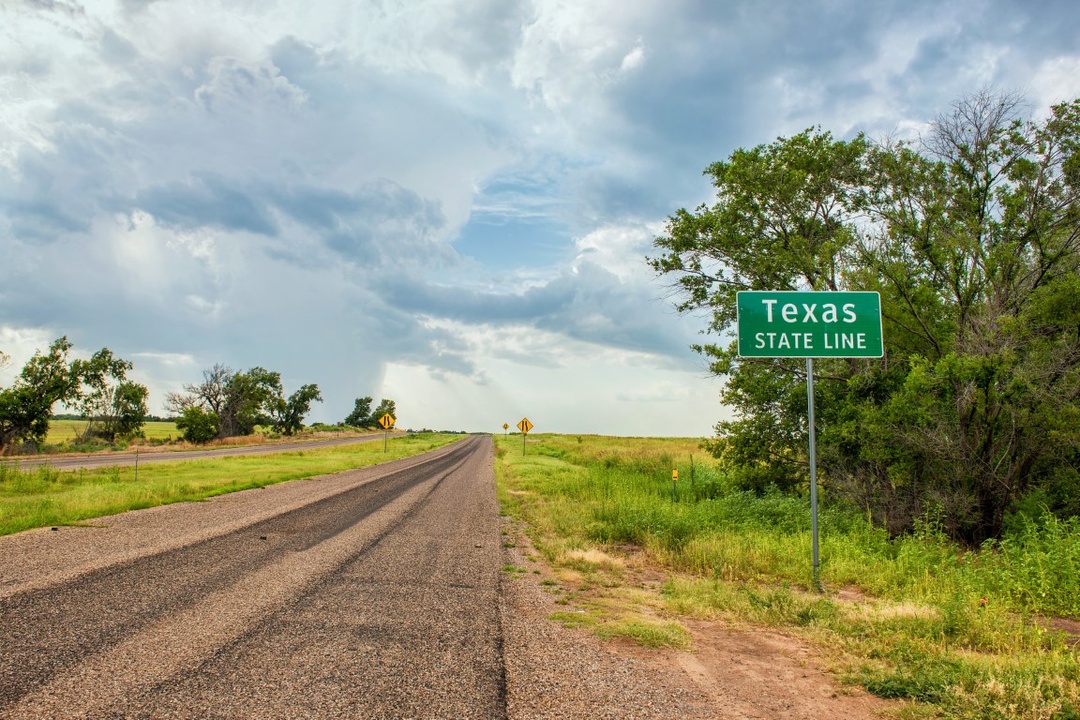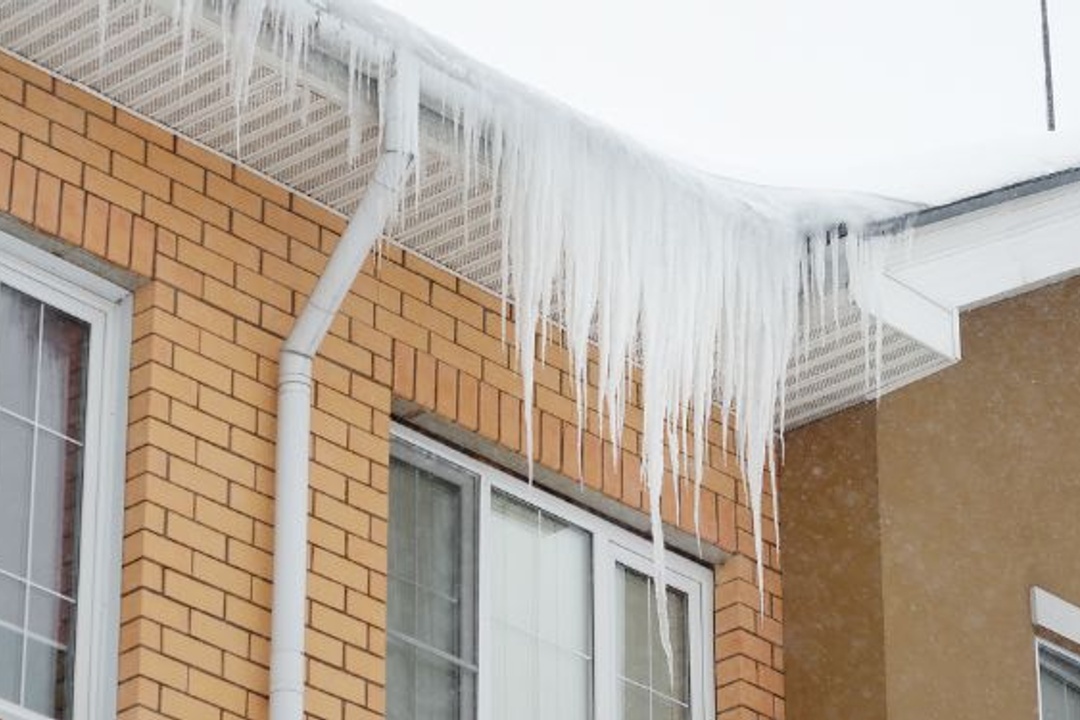
Xeriscaping is a landscape designing technique of creating a yard that requires little water. Xeriscaping takes advantage of native and drought hardy plants, along with hardscaping and decorative elements to create an attractive display that requires minimal maintenance.
The practice is most popular in arid and semiarid climates, where watering restrictions are common but can be practiced in any area.
It’s easy to see the appeal of xeriscaping. From lowering monthly water bills and less maintenance to helping out the environment, it definitely has its perks. If you are contemplating converting your lawn to a xeriscaped space, here are a few tips to get you started on the right path.

1. Make a Plan Before You Start Planting
Xeriscaping is all about making use of the existing environment to create an attractive design that won’t need to be watered much, if at all. Before you head off to the garden center, take time to really investigate your yard and create a design that you can build from.
Make note of any areas experiencing drainage issues, or drought-tolerant plants you may already have, and be sure to design around them. Sketch out your plan and take it with you to buy plants and other materials so you can choose purposefully and set yourself up for success.
Tip: There are many design ideas for xeriscaped yards available online. A quick search of Google or Pinterest will bring up a number of options. Just make sure any design you choose is specific to your area and climate. Garden centers and botanical societies also often have workshops and classes you can attend to learn more about the practice of xeriscaping.

2. Keep Soil Quality In Mind
One of the best ways to set your xeriscaped yard up for success is to build it on a foundation of good soil. The perfect soil for this type of planting needs to both retain moisture and provide adequate drainage.
Soil that has too much clay will not drain well and soil with too much sand will not retain enough moisture to sustain plants without regular watering. The best way to add the drainage and retention factors to your soil is to till a good amount of organic matter into the top layer.
Tip: In Texas, it is recommended to add four to six inches of organic matter and till into the soil for any areas that will be used for shrub and flower plantings. You could use shredded pine bark, rice hulls, peat, or other similar organic matter.

3. Decrease Your Lawn Size
Turfgrass is the largest water consumer in any yard by far. The EPA estimates that 30-60% of urban fresh water is used to water lawns. Reducing the size of your lawn, or eliminating turf grass completely, is one quick way to dramatically reduce your water consumption and maintenance requirements as well.
Convert your former lawn space into hardscape design, punctuated by plantings and decorative elements like fountains, birdbaths, container plantings, and rock gardens. If you have pets or kids and want to keep a grass area for them to play, simply reducing the size of the lawn will move you towards your goal.
Tip: Another alternative to traditional turf grass that still maintains the look of a lush green lawn is to install synthetic turf grass. This zero water option could save you around 22,000 gallons of water each year.

4. Replace Turf Grass with Water Conscious Alternatives
Replace the water greedy turf grass in your remaining lawn space with hardy native or drought-tolerant species to further reduce your watering needs.
St. Augustine grass is a popular option in Texas, but buffalo grass and Bermuda grass are excellent choices as well. Drought tolerant ground cover plants, such as Asiatic jasmine, monkey grass, or trailing juniper will also present the blanket green effect of a lawn space without the high water requirements.
Tip: If you are using native grasses or drought-tolerant ground cover, be mindful of high traffic areas. Some plants hold up better than others being continuously walked on. In those areas, you may want to opt for traditional turf grass or plan stone or gravel pathways.

5. Opt for Native Plants Where Possible
Native plant species can survive exclusively on rainwater, making them ideally suited as xeriscaping options. Texas has an abundance of attractive and hardy native plants to choose from.
South Texas gardens can utilize Texas mountain laurel and sage for beautiful and fragrant purple flower displays. Texas palmetto, prickly pear, and desert willow also grow well in this region.
Xeriscapers in Central Texas can plant bald cypress for shade and red yucca or Yaupon holly for the perfect pop of red. Rockrose and black-eyed Susan are vibrant butterfly attractors that also grow well there.
Tip: Native plants will also attract native animal species to your yard. Plant groupings of native wildflowers to attract hummingbirds and pollinators like bees and butterflies.

6. Choose Plants That Naturally Grow Well In Your Area
You can also choose non-native plants that come from regions with similar climate and environmental conditions. The growing conditions in Texas can be punishing for some exotic plants, so look for options that are drought and heat-tolerant.
There are many varieties that are pest-resistant as well, further reducing your maintenance requirements. Check online databases of hardy Texas-friendly plants or talk to the staff at your local garden center for ideas.
Tip: Some hardy nonnative species can potentially be invasive and could take over a flowerbed or even swallow an entire lawn if left unchecked, so it’s important to do your research.
If you plan on utilizing a species deemed “invasive,” be sure to have a containment plan in place and be aware it will require more maintenance to keep it under control.

7. Make Use of Natural Precipitation
Capturing and using rainwater is one of the best ways to maximize your xeriscaping plan. Attach rain barrels to your gutter system to capture and utilize water runoff. According to the EPA, rain barrels can save you an average of 1300 gallons of water.
You can invest in a commercially produced rain barrel system or build your own. Another great option is to create a rain garden in an area where water naturally pools to help filter groundwater and discourage flooding from runoff.
Tip: Be sure to install a rain gauge in your yard so you can accurately track how much water your plants are getting and adjust your watering accordingly so you don’t overwater.

8. Use Rocks as Zero Water Accents
Decorative rocks can add color and texture to the overall presentation of your yard with zero water requirements. Use large rocks to fill spaces between plantings or stack rocks and plant the crevices with succulents or trailing plants for an attractive design. Beds of river rocks or gravel can be laid out in decorative patterns in place of turfgrass.
Tip: If you notice significant runoff in your yard, build a dry stream bed in that area for a visually stunning way to capture and divert the water.

9. Create a Seating Area
Add more elements that don’t require water and increase the versatility of the space by creating a designated seating area. Flagstones, pavers or crushed granite can be used to define the space. Fill it with comfortable furniture for a relaxing nook where you can sit and enjoy your xeriscaped yard. Add a chiminea or fire pit to increase the coziness factor.
Tip: Opt for paving stones or flagstone instead of a paved patio slab, and allow for spaces between the stones. This space will allow rainwater to seep into the ground, where it can be used by your plants.

10. Plant Hardy and Attractive Succulents and Herbs
Succulents and herbs are attractive and versatile drought-tolerant plants. Succulents provide a wide range of hues, from verdant greens to deep purple and bright red, as well as a multitude of visually arresting shapes while requiring minimal water.
Many herbs are surprisingly well suited for xeriscaping as well, and add both visual beauty and delicious fragrance to your yard. Rosemary is an excellent choice for Texas, along with thyme, lavender, and oregano.
Tip: Agave, aloe vera, and century plant are large succulent species that thrive in the Texas climate and can grow into statement plants in your yard.
Though prickly, cactus are also succulents and can make beautiful additions to a Texas xeriscaped garden. If you are adding herbs, look for those native to the dry soil of the Mediterranean.

11. Use Drip Irrigation (It’s More Effective)
When you do water your xeriscaped yard, it is important to do so effectively. Drip irrigation delivers water right where plants need it without wasteful sprays or sidewalk runoff. This method provides for deep watering, which encourages deep root growth, and prevents evaporation.
You can install a drip irrigation system or utilize soaker hoses covered in a layer of mulch to achieve the same result. When using this method, water infrequently and in the morning or evening.
Tip: If you have a sprinkler system installed already, adjust the sprinkler heads to release large droplets, rather than a fine mist to combat evaporation waste and shallow watering. Make sure none of your sprinklers are spraying unneeded areas, like the street, sidewalk, or driveway.

12. Include Mulch In Your Design
Mulching is a great way to conserve moisture by preventing water evaporation from the soil. It will also reduce weeds and prevent compaction and overheating of the soil. Apply a generous layer of your mulch of choice around any plantings to help them retain moisture.
Organic mulches include wood chips, shredded bark, pine needles, and similar materials. Inorganic mulches are also available, in the form of black plastic, landscaping fabric, etc.
Tip: Organic mulches will improve the soil as they break down, but will need to be replaced more often. Inorganic mulches are unsightly and so will need to be covered with another material like gravel, rocks, or organic mulch.

13. Create a Container Garden
Filling a variety of vibrant containers with drought-hardy plants is a great way to add versatility and visual interest to your xeriscaped yard. Your imagination is the limit when choosing planters.
From traditional pots to recycled colanders and retired watering cans, you can truly customize your space. Containers also give you the option to rearrange your plantings for a fresh look.
Tip: Larger containers will retain moisture better and will require less watering, so bigger is better in this instance. Non-porous materials like glazed clay or plastic will also stay moist longer than terra cotta, wood, or similar porous materials.

14. Group Plants by Watering Needs
Even in a xeriscaped yard, your plant choices will have varying moisture needs. Group plants with similar water requirements together to maximize your water usage. By consolidating more water-needy plants in one area, you can focus your watering efforts on them, instead of wasting water on the entire yard.
Tip: Planning, again, is key here. Research each plant’s water needs and come up with a design before you head out to buy plants. If you have already planted, don’t be afraid to relocate your existing plants into more advantageous groupings.

15. Check for Rebates
Xeriscaping can be great for you as the homeowner, and it can also provide great benefits to your community. Because of this, many cities, counties, and local water companies offer incentive rebates to members of their community for opting to xeriscape.
Rebates are offered for rainscaping measures, rainwater collection, water-wise landscaping, and more. Sometimes supplies like mulch and soil moisture meters are also offered for free. Check with your local organizations to see what is available to you.
Tip: Austin and San Antonio offer a range of rebates and incentives for those interested in xeriscaping and water conservation.

The Benefits of Xeriscaping
Xeriscaping requires a major redesign of your outdoor spaces, the sacrifice of your fluffy turf grass, and quite a bit of research and work on your part. With all of that, is it worth it? What are the benefits of taking this landscaping route?
It Saves Money: From the reduction of utility bills to a decrease in lawn maintenance costs, xeriscaping will bring your yearly expenses down.
It’s Less Maintenance: Once your yard is established, your maintenance requirements will decrease. Spend less time working on your yard and more time enjoying it. Xeriscaped yards require less watering, less (or no) mowing, less fertilizing, less pest control, and fewer replantings than traditional yards.
It Allows Natural Beauty: Xeriscaping highlights the natural beauty of the area you live in. By utilizing native flora, your yard will blend with your surrounding environment beautifully and will encourage visits from the native fauna like birds, butterflies, toads, and lizards.
It’s Great For the Environment: Xeriscaping not only conserves water, but it also helps reduce pollution from fertilizers and pest control and provides habitat and food sources for native pollinators.
It Could Increase Your Property Value: With an uptick in curb appeal and a reduction in energy and utility costs, potential buyers will see the value in a xeriscaped yard.

How to Xeriscape in Texas
With many cities routinely under water restrictions during the heat of summer, the hot and dry Texas climate is perfectly suited for xeriscaping. All of the tips outlined above will be useful to any Texans hoping to make this water-conscious choice.
Long dry spells punctuated by torrential rains mean that rainwater collection and rain gardens are especially pertinent for xeriscaping Texans who want to avoid excessive runoff. Choosing drought-tolerant plants is also essential to success, as yearly droughts are the rule rather than the exception throughout much of Texas.
Texans can also reduce summer energy costs by planting trees and shrubs to provide shade and shield their homes from direct sun.
Many garden centers, including the San Antonio Botanical Garden, Zilker Botanical Garden, and the Ladybird Johnson Wildflower Center have had exhibits dedicated to Texas xeriscaping efforts. Visitors can get inspiration and talk to experts for advice on how to make their yard a success.
Xeriscaping sets aside the all-American image of the manicured lawn and white picket fence for a landscape that is both more natural and personalized. Switching to this landscaping style requires time and effort commitment, but those investments can reap dividends in the long run.
From bringing down costs and helping the environment to expressing your individuality, xeriscaping can be a truly rewarding decision. Don’t be afraid to start by making small changes. Simply by replacing part of your lawn with decorative hardscaping, choosing drought-tolerant flowers, or installing a rain barrel can make a noticeable difference.











